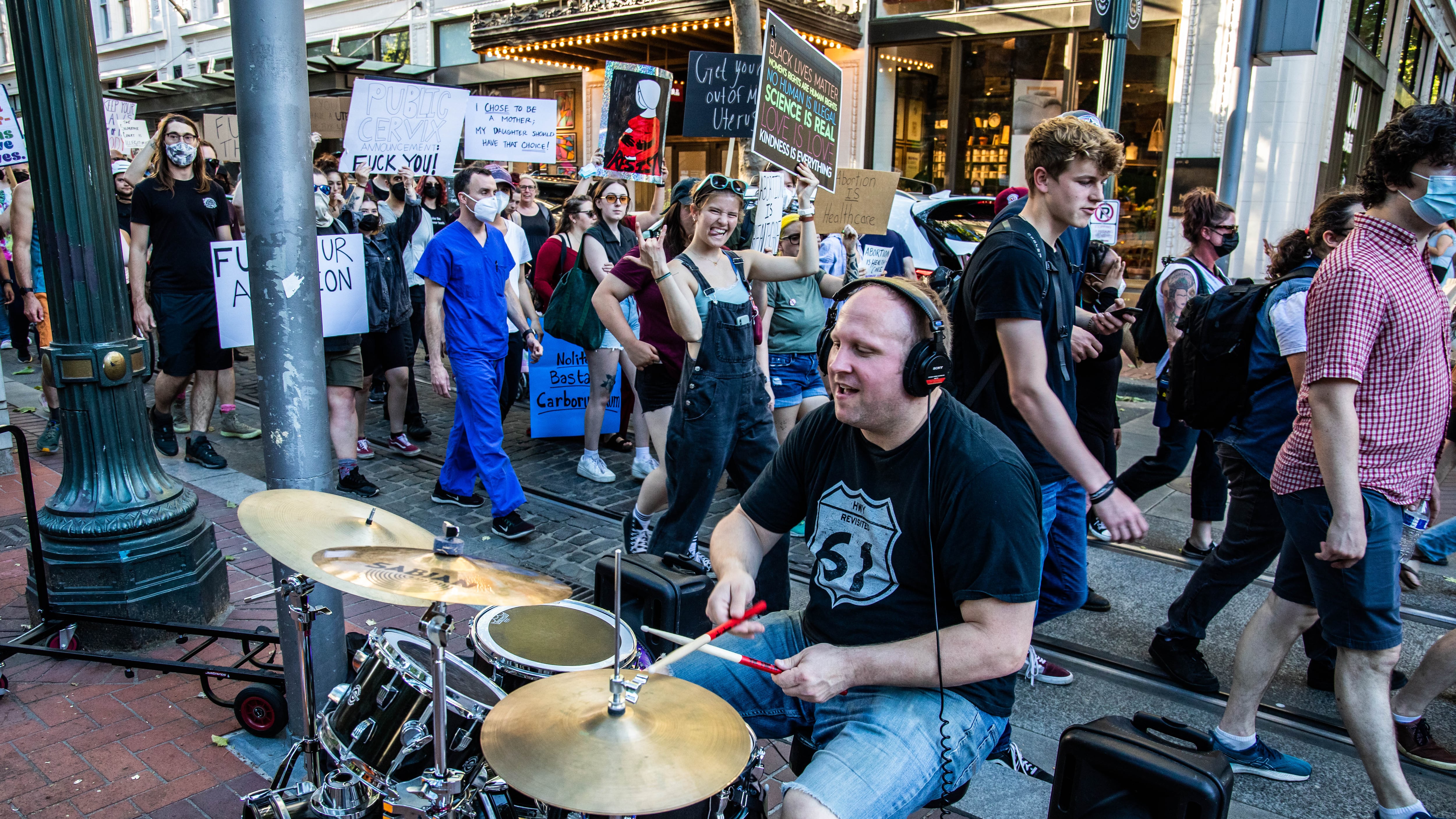Temperatures across Portland topped off at 99 degrees Fahrenheit around 4 pm Sunday—the first sweltering temperatures of this summer.
The National Weather Service recorded highs of 99 at Portland International Airport and on the Fremont Bridge, both shortly after 3:30 pm. One more day in the 90-degree range is expected on Monday, followed by about a week of more moderate temperatures in the 70s and 80s.
The heat wave coincided with an eventful weekend in Portland, marked by multiple protest marches against the U.S. Supreme Court’s abortion ruling, political vandalism along Northeast Sandy Boulevard, and the now-familiar complaint by police that they lacked the staffing to respond to crowds and crime. On Sunday night, the Multnomah County Sheriff’s Office announced that a man who had jumped into the Columbia River to save a woman struggling to swim was missing and presumed drowned.
The warm weekend also left many Portlanders thinking back, nervously, to the heat dome of last summer that left 69 Portlanders dead. Temperatures in late June 2021 reached 116 degrees, the highest ever recorded temperature in the city. Streets buckled, train service stopped, and Portlanders, especially those in East Portland, found themselves seeking refuge from the heat—sometimes fruitlessly.
On Sunday, Multnomah County released a report examining those deaths.
Nearly 80% of those who died were above the age of 60. Fifty-eight percent lived in apartments, and 33% of those lived on or above the third floor of the building.
In its report, the county called the lack of air conditioning a “key driver” of the deaths. Only 10 of the 69 who died had an air conditioning unit.
The two ZIP codes where the highest number of deaths occurred were both in heat islands. They included portions of the Lents neighborhood and downtown Portland.
At least three people were found dead in their RVs, which did not have permanent parking locations. Another person, who was homeless, was found dead outside of a Southeast business.
Shortly after his death, WW visited the trailer park in Northeast Portland where Eugene Anderson—one of those who died from the heat—had lived. Neighbors of his remember him as quiet but pleasant when making small talk at the mailboxes. But mostly he kept to himself in his trailer, which he’d take to go to the grocery store down the road and meticulously back it into his slot between two other trailers. Anderson’s trailer was in spot 18.
It wasn’t until August that Anderson’s name and location, as well as two other victims WW identified and the rest of the heat wave victims, were released to news outlets by Multnomah County officials after it was ordered to by the Multnomah County district attorney.
Six people died in buildings owned and run by Home Forward, the city’s housing authority.

